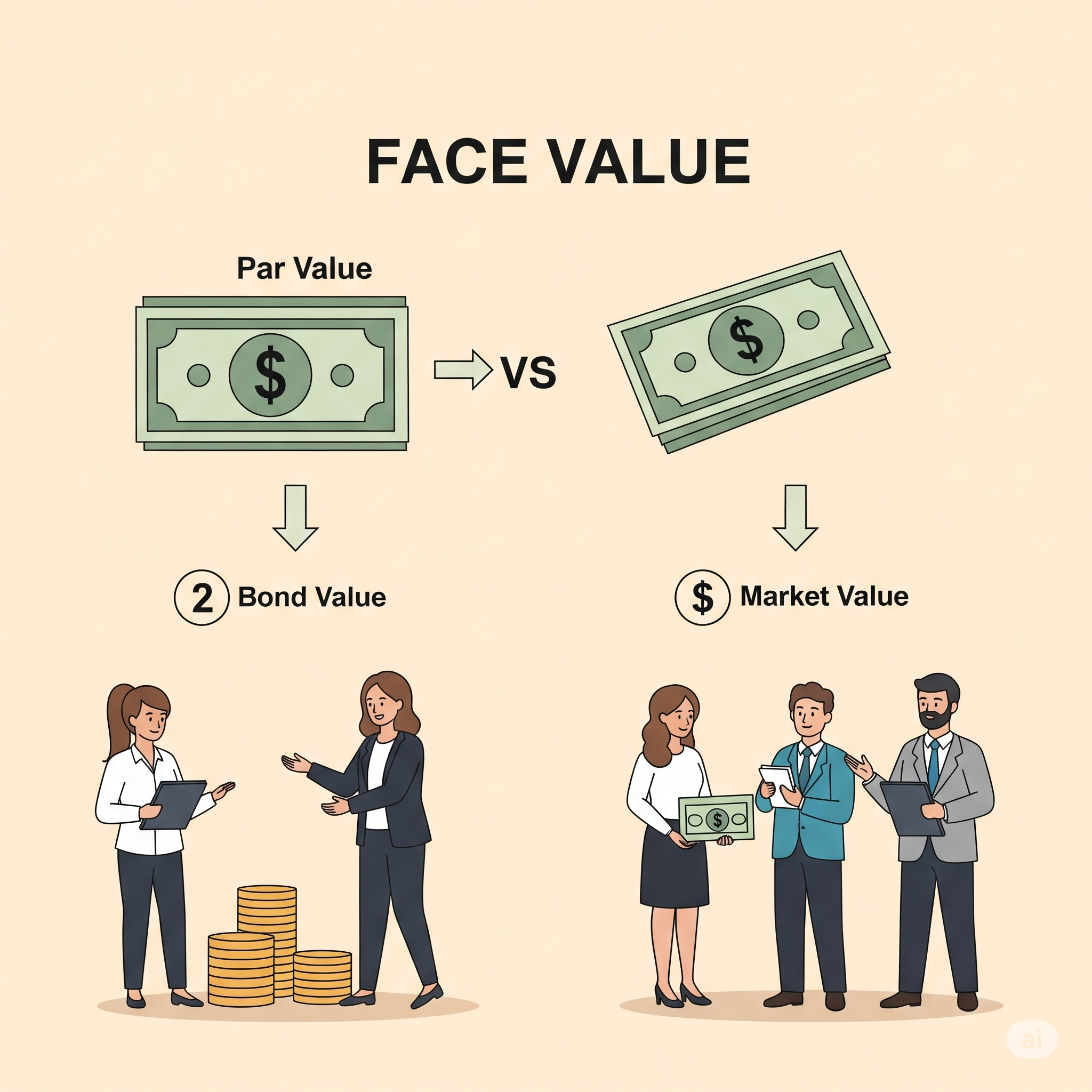Face Value, also often called Par Value or Nominal Value, is the initial, stated value of a financial instrument as determined by the issuer. It’s the value that is typically printed on a stock certificate, bond certificate, or even a banknote.
Here’s how it applies to common financial instruments:
-
For Stocks (Shares):
- It’s the original theoretical price at which a share was issued by the company.
- It’s largely a legal and accounting concept rather than a reflection of the share’s actual market worth. Companies often set a very low face value (e.g., ₹1, ₹2, ₹10) to comply with regulations.
- Importance:
- Dividend Calculation (especially for preferred shares): Dividends on preferred shares are often declared as a percentage of the face value (e.g., “5% dividend on ₹10 face value” means ₹0.50 per share).
- Accounting: It’s used in the company’s balance sheet to determine the equity share capital.
- Stock Splits/Consolidations: When a company undergoes a stock split, the face value per share is adjusted downwards proportionally.
-
For Bonds:
- This is where face value is most significant.
- It represents the principal amount that the bond issuer promises to pay back to the bondholder at the bond’s maturity date.
- Interest payments (coupon payments) on bonds are typically calculated as a percentage of the face value (e.g., a 6% coupon on a bond with a ₹1,000 face value means ₹60 in annual interest).
- Unlike stocks, the face value of a bond is generally the redemption value you receive at maturity.
3. Face Value in Mutual Funds:
When a mutual fund scheme is launched through a New Fund Offer (NFO), its units are typically offered at a fixed Face Value, usually ₹10 per unit. This serves as the initial reference point for the fund’s unit price. After the NFO period, the units trade at their Net Asset Value (NAV), which fluctuates daily based on the market value of the fund’s underlying investments.
Key Difference: Face Value vs. Market Value
It’s crucial to understand that face value is different from market value:
- Face Value: The original, fixed, stated value set by the issuer. It generally remains constant (except for corporate actions like stock splits).
- Market Value: The current price at which a stock or bond is being bought and sold in the open market (stock exchange or bond market). This value constantly fluctuates based on demand, supply, company performance, interest rates, economic conditions, and investor sentiment.
For example, a stock might have a face value of ₹10, but its market price could be ₹500. Similarly, a bond with a face value of ₹1,000 might trade in the market for ₹950 (at a discount) or ₹1,050 (at a premium) before its maturity, depending on prevailing interest rates and credit risk.




